A project documentation template brings clarity and structure to your entire project from day one. Whether you’re aligning teams, tracking progress or keeping stakeholders informed, it helps you stay organized and focused. With everything documented in one place, teams can collaborate more effectively, reduce risk and keep work moving forward—no matter the complexity or scope.

ProjectManager’s free documentation template for Excel
Why Use a Project Documentation Template?
A project documentation template is a standardized format used to capture and organize key information throughout the lifecycle of a project. It typically includes sections for scope, objectives, timelines, roles, resources, risks and deliverables, providing a consistent structure that ensures nothing critical is overlooked. By having all relevant data in one centralized document, teams can align more easily, make informed decisions and maintain continuity even as team members change or projects evolve.
Using a project documentation template improves efficiency and reduces confusion by eliminating the need to start from scratch for each new project. It also enhances accountability, as responsibilities and expectations are clearly outlined from the beginning. Whether managing a small internal initiative or a large-scale construction project, this project documentation template serves as a single source of truth, streamlining communication, minimizing risk and keeping everyone on track from planning to completion.
A project documentation template lays the groundwork for effectively using project management software. By organizing key project details that feed directly into ProjectManager, an award-winning project and portfolio management software, information like scope, timeline, resources and milestones from the template can be easily translated into Gantt charts. This sets up the project structure in a format that’s trackable and actionable. More than that, our Gantt chart links all four types of task dependencies to avoid cost overruns and bottlenecks, can filter for the critical path to identify tasks with zero slack and set a baseline to track progress in real time. Get started with ProjectManager today for free.
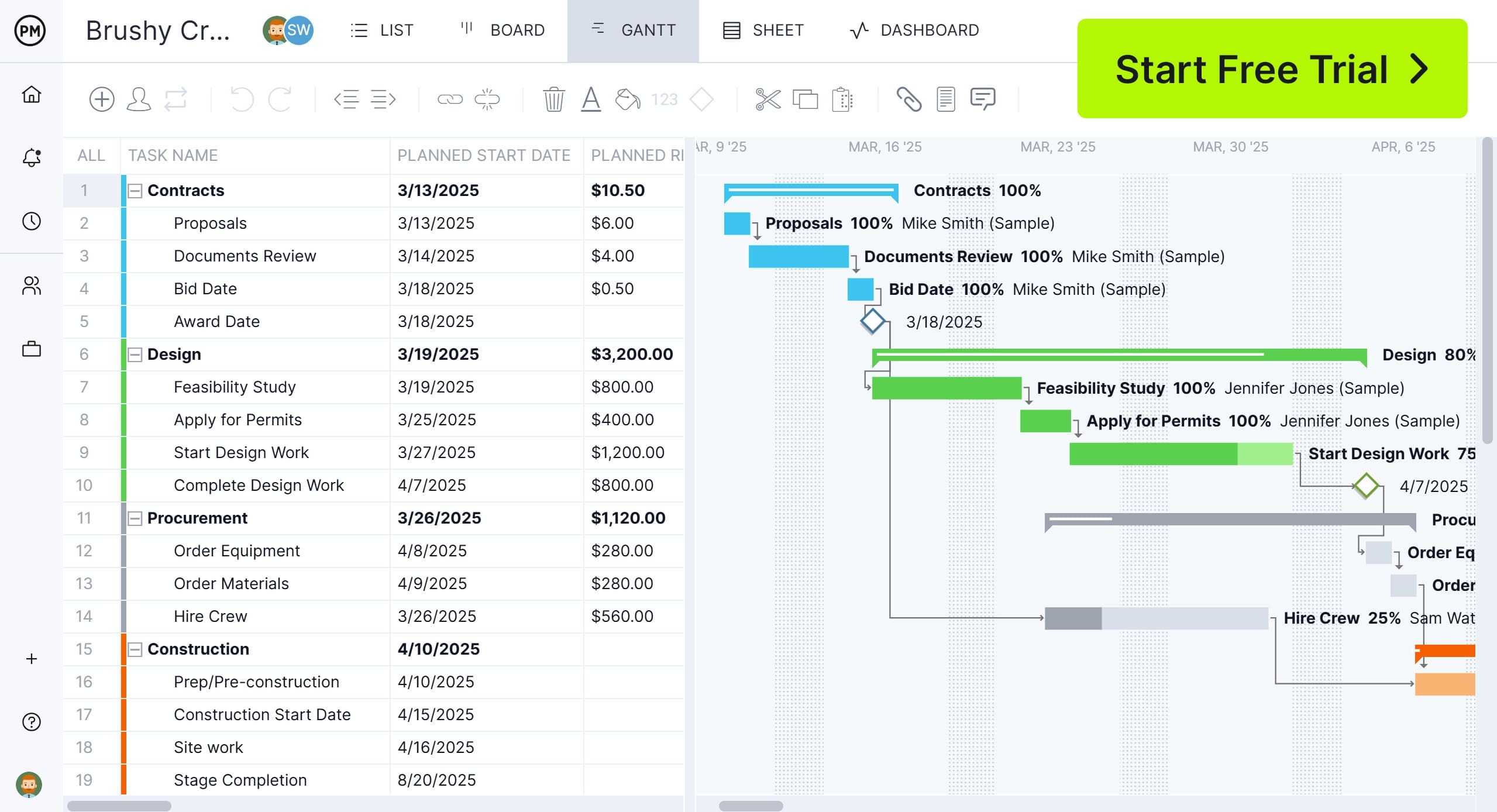
When to Use a Project Documentation Template
A project documentation template should be used at the very beginning of a project—during the planning or initiation phase—to clearly define goals, scope, timelines, responsibilities and key deliverables. It’s also valuable throughout the project lifecycle whenever there are updates, milestones reached, scope changes or team transitions.
Whether you’re launching a new initiative, managing a complex build or closing out a completed project, this template helps keep everything organized, aligned and traceable—ensuring consistent communication, accountability and control from start to finish.
Who Should Use This Project Documentation Template?
Project managers, team leads and stakeholders involved in planning, executing or overseeing a project should use a project documentation template. It’s especially useful for anyone responsible for aligning teams, managing resources, tracking progress, or communicating with clients and executives.
Cross-functional teams—such as engineering, construction, IT, or marketing—can also benefit by using the template to ensure consistency and clarity across departments. Ultimately, anyone who needs a structured, reliable way to document and manage a project from beginning to end will find this template essential.
How to Use This Project Documentation Template for Excel
Here is a step-by-step guide on how to use the project documentation template in Excel to help you get started.
Step 1: Review the Structure
Your template is already organized by columns such as project phase, document name, description, owner, status, dates and link—so it’s ready to go. Take a moment to familiarize yourself with the layout and how each section is grouped by project phase.

Step 2: Customize Project Details
Start filling in or updating the rows to reflect your current project:
- Make sure each document listed is relevant to your project.
- Update the project document owner to assign responsibility.
- If a document doesn’t apply, you can delete or repurpose the row.
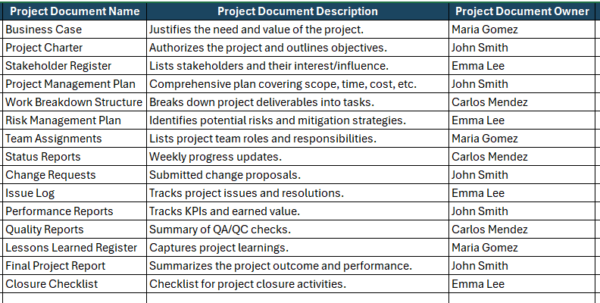
Step 3: Track Status and Dates
Use the status column to indicate the stage of each document (e.g., draft, in progress, approved). Update the date created and last updated fields as progress is made. This helps track which documents need attention and when they were last reviewed.
 Step 4: Link to Files
Step 4: Link to Files
Ensure the location/link column is populated with accessible paths to your actual documents, such as SharePoint, Google Drive or your company server. This makes it easy for team members to locate and open the files directly from the template.
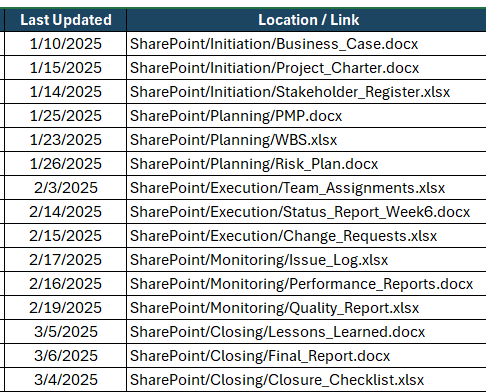
Step 5: Maintain Regular Updates
Treat this template as a living document. Revisit it during project check-ins or phase transitions to:
- Update statuses and ownership
- Add new documents as needed
- Ensure everything stays aligned with project progress
Step 6: Share and Collaborate
Store the completed template in a central location (like SharePoint or your project management platform), and make sure key stakeholders have access. This promotes transparency, accountability and easy collaboration across the team
Related Project Documentation Templates
There are other free templates available to help with the planning, execution and tracking of projects beyond the project documentation template. We have over 100 free templates for Excel and Word that help with every aspect of managing projects. Here are just a few examples.
Project Plan Template
This free project plan template is a structured document that outlines how a project will be executed, monitored and completed. It typically includes key components such as objectives, scope, schedule, resources, milestones and risk management strategies. This template provides a clear roadmap for the entire project, helping teams stay aligned, organized and on track from start to finish.
Project Execution Plan Template
Use this free project execution plan template to outline how a project’s scope, timeline, resources and deliverables will be carried out. It serves as a blueprint for managing day-to-day operations during the execution phase, including task assignments, communication strategies, quality assurance and risk mitigation. By clearly defining roles, responsibilities and procedures, the template helps ensure consistent progress, keeps the team aligned and supports the successful delivery of project goals.
Project Dashboard Template
This free project dashboard template is a visual reporting tool that consolidates key project metrics—such as progress, budget, timeline, tasks and risks—into a single, easy-to-read layout. Often using charts, graphs and status indicators, it provides stakeholders with real-time insights into project performance at a glance. This template helps teams monitor progress, spot issues early and make data-driven decisions to keep the project on track.
ProjectManager Goes Beyond a Project Documentation Template
Unlike static project documentation templates that simply store information, ProjectManager goes further by turning plans into action with multiple dynamic project views. Instead of tracking progress manually, teams can instantly visualize and manage work in Gantt charts, task lists, kanban boards, calendars or sheet views—all synced in real time.
This allows for live collaboration, faster updates and greater visibility into every phase of the project, making it easy to stay aligned, adjust on the fly and keep projects moving forward efficiently.
Turn Plans Into Action With Resource Management Features
Our software enhances project documentation by transforming plans into action with powerful resource management tools. The team page gives a centralized view of each team member’s roles and availability, while color-coded workload charts help balance assignments and prevent burnout.
Real-time availability settings ensure resources are scheduled based on actual capacity, not assumptions. Together, these tools allow for smarter planning, more accurate timelines and better use of people and equipment, keeping projects on track and teams working efficiently.
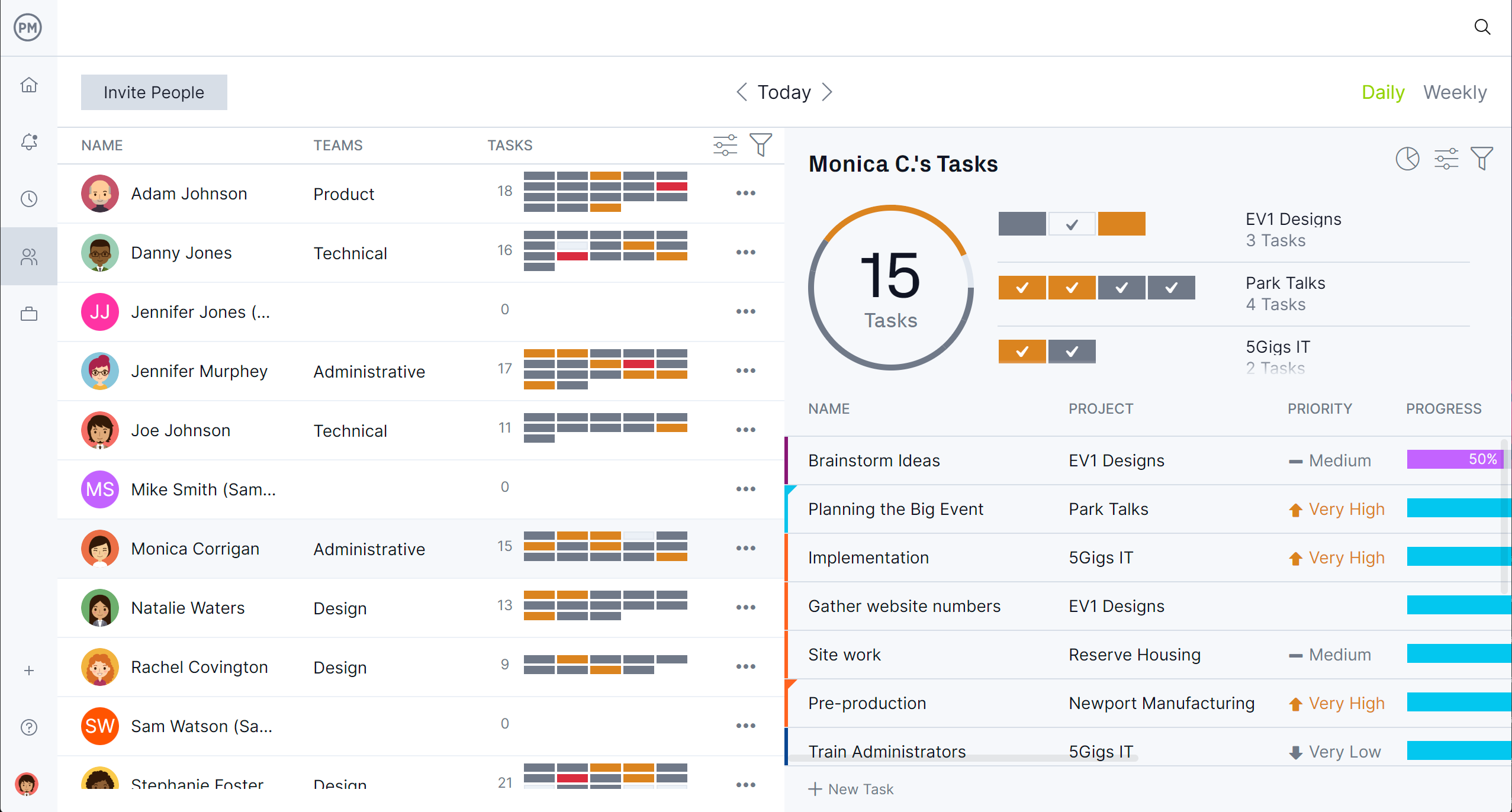
Track Project Metrics in Real Time With Dashboards, Reports and Templates
Use robust tracking tools to provide real-time insight into progress, performance and budget. The live dashboard offers a visual snapshot of key metrics like task completion, time logged and cost variances. Customizable reports allow teams to analyze performance by phase, resource or deliverable, while secure timesheets track actual hours worked to keep labor costs accurate. These tools ensure that documented plans are actively monitored, helping teams stay on schedule, control costs and respond quickly to changes.
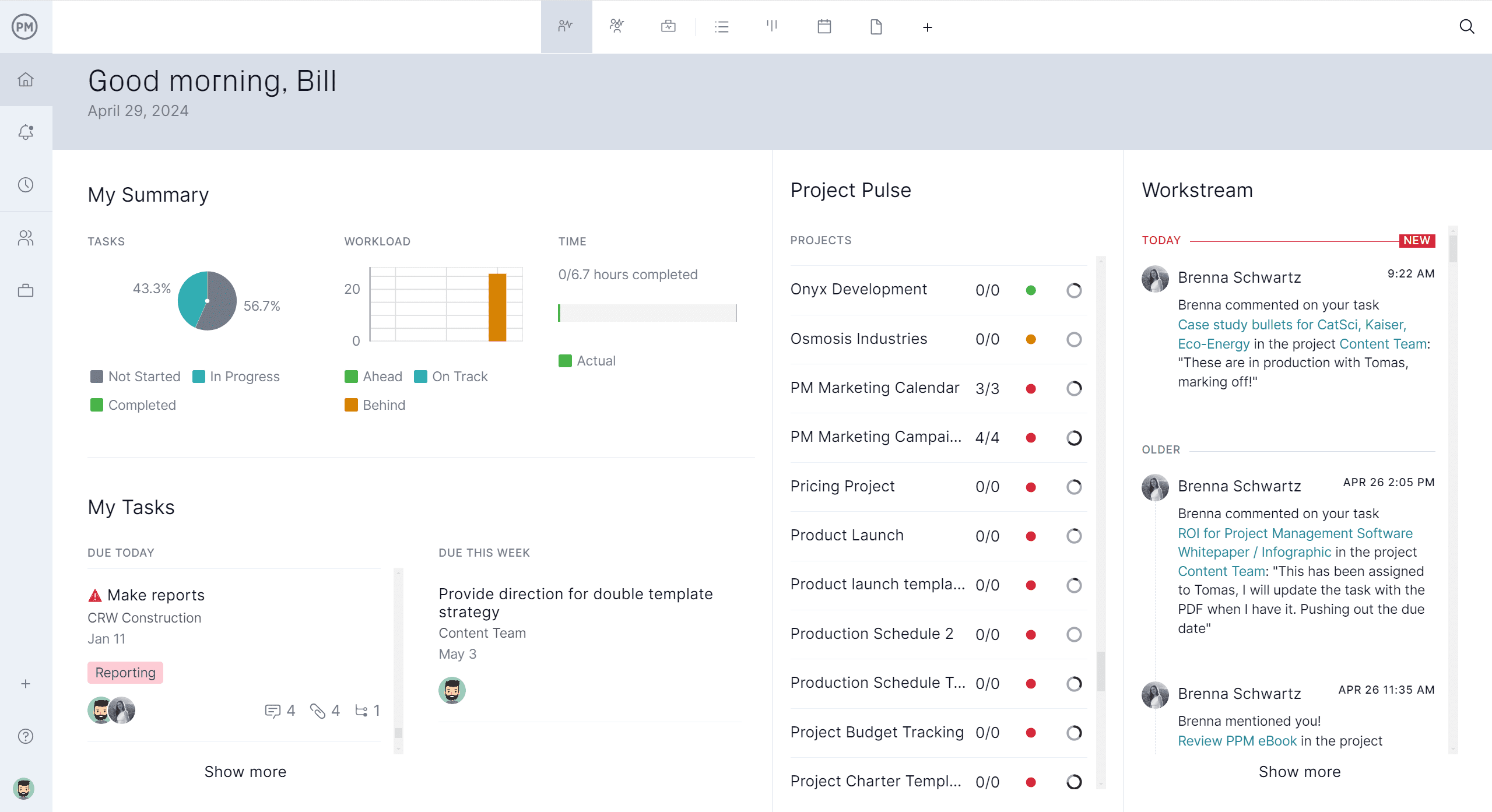
Related Content
For those who want to read more on this subject, follow the links below. They lead to some recent blog posts on project documents, reports and tender documents.
- 20 Essential Project Documents
- How to Write a Construction Proposal (Examples & Template Included)
- 6 Project Report Examples (Free Download)
- Top 10 Tender Documents in Construction
- Top 7 Decision-Making Templates: Free Excel and Word Downloads
ProjectManager is online project and portfolio management software that connects teams whether they’re in the office or out in the field. They can share files, comment at that task level and stay up to date with email and in-app notifications. Join teams at Avis, Nestle and Siemens who are using our software to deliver successful projects. Get started with ProjectManager today for free.
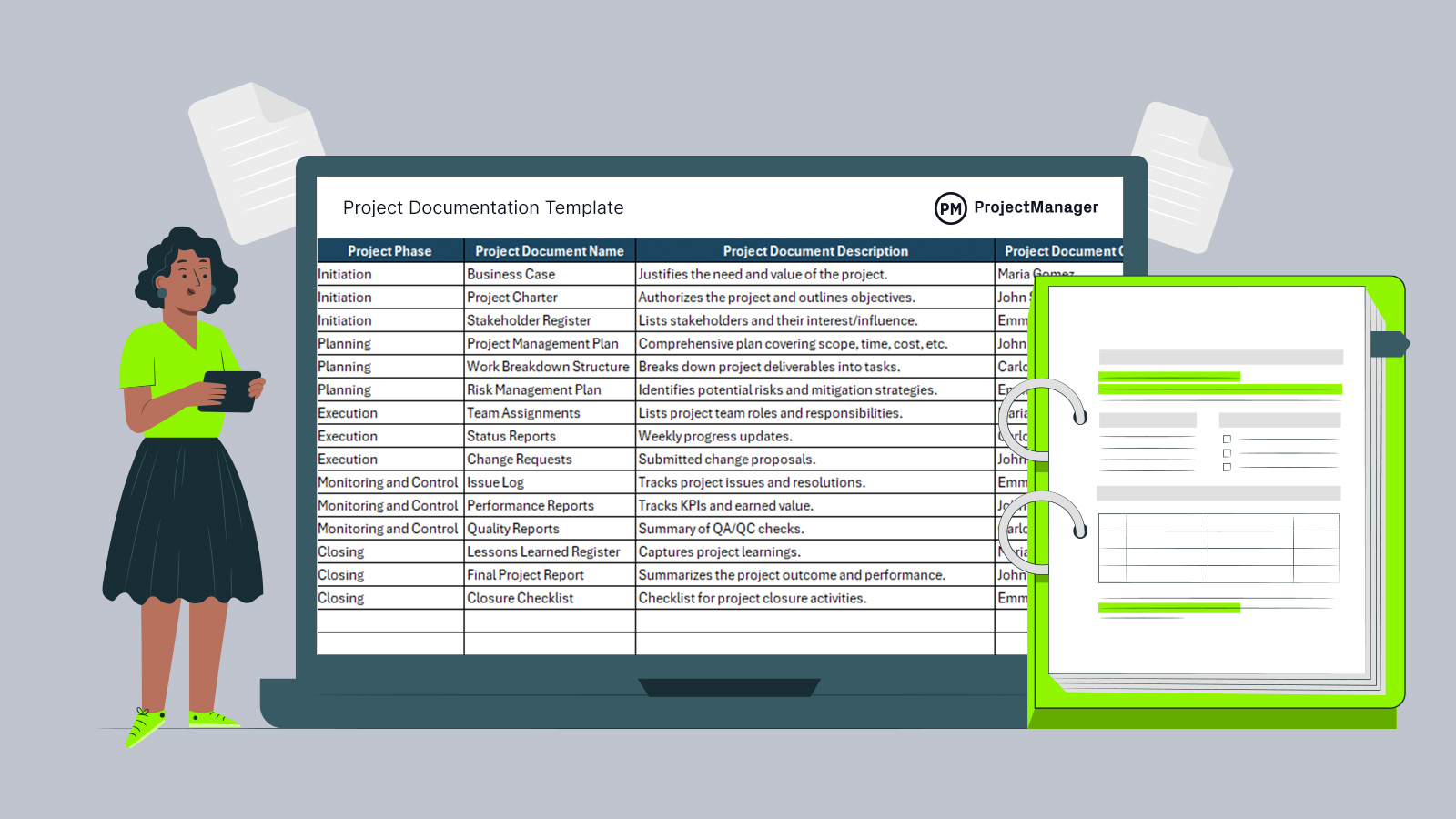
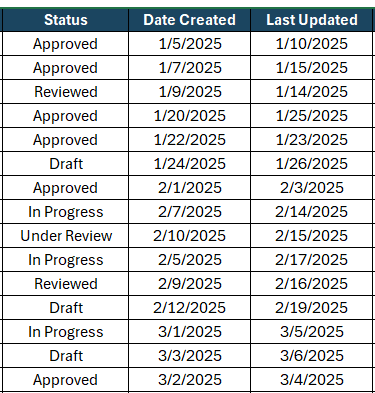 Step 4: Link to Files
Step 4: Link to Files